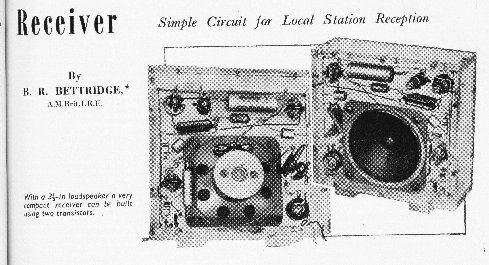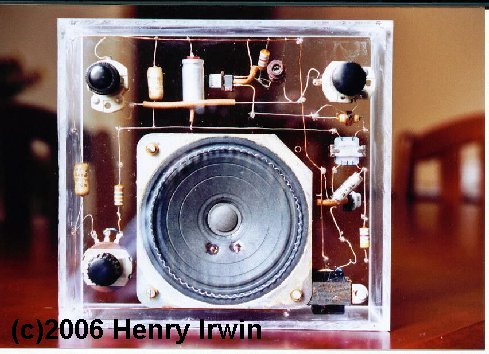|
What was the first transistor radio? You probably will reply that it was the Regency TR1. That is generally accepted as the first commercially successful transistorised radio, using junction transistors. (The claim is slightly questionable, since Intermetall in Germany showed a radio at the Dusseldorf Radio Fair the previous year, which does not seem to have been developed commercially). However, there must have been earlier attempts to make a radio in the laboratory, probably not long after the invention of the transistor, and therefore using the much less tractable point-contact transistor. Little evidence of these circuits survives, but one is shown here, from an article in Wireless World magazine published in January 1954 by B.R.Bettridge of the Osram Valve and Electronics Dept. of the General Electric Co., Ltd, of England. The same radio features on the cover of Bettridge's book "Transistors and Crystal Diodes" published in 1954. This small book contains photographs of several early GEC transistors, including a junction type. One chapter is entitled "Practical Radio Circuits for Point-contact Transistors" and it shows three complete receiver circuits, as well as three other circuits of receiver stages. The most complex is a reflex receiver using two point contact transistors of type GET1 (shown on my GEC page). The complexity of this circuit shows that GEC had been working on these designs for some time. In the image showing the front of the loudspeaker, one GET1 can be seen just diagonally outwards from the top left corner of the speaker, and other just to the right of the top right corner. |

|
